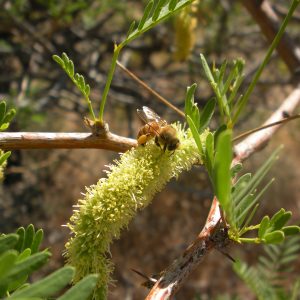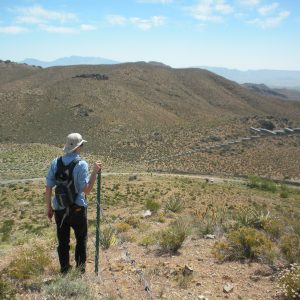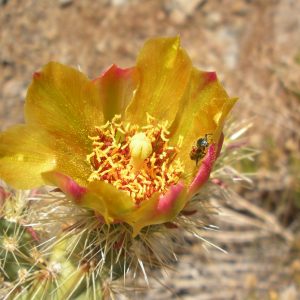Hey everyone! I just started working as a CLM intern for the Bureau of Land Management in Lakeview, OR. So far I absolutely love Oregon and the internship! I will be working with a fire ecologist as well as collecting seeds for the Seeds of Success program. I have learned a lot just the two weeks and a half weeks that I have been in Oregon!

A view of Goose Lake from behind the town of Lakeview, OR
Last week, I helped to collect data at the site, Mill Creek which had been burned in 1996 and then again in 2006. At this site, the fire ecologist that I am working with is monitoring the plant, Pedicularis centranthera, which is a sensitive plant.

The beautiful Pedicularis centranthera plant!
Being from Indiana I did not have a background in western plant ID but I have already learned a lot of plants! The botany seasonal crew has been doing clearances in the Lakeview District, I have assisted them a few days and I have learned a lot of new plants!

An orange Castilleja sp. with the landscape in the background
I just finished SOS training in Vale, OR. I learned a lot during the training and I got to meet some of the other interns around the area! During our field day we collected seeds of Amsinckia tessellata which has a beautiful scorpioid inflorescence.

Field site where we collected Amsinckia tessellata

Sucker Creek State Park, where we ate lunch for the SOS training field day!
Thanks! I hope everyone is having a great summer!
Molly Baughman












 Brittany and I have been charged with numerous and exciting responsibilities. My time so far has been spent managing and editing an extensive excel file of invasive animals in the national parks across the country, which will conclude as a national report to Congress. Talk about instant gratification; who knew the hours upon hours of collegiate excel work would be put to such immediate use! Having collaborated on an aquatic invasive species research project with my advisor at Hamline (
Brittany and I have been charged with numerous and exciting responsibilities. My time so far has been spent managing and editing an extensive excel file of invasive animals in the national parks across the country, which will conclude as a national report to Congress. Talk about instant gratification; who knew the hours upon hours of collegiate excel work would be put to such immediate use! Having collaborated on an aquatic invasive species research project with my advisor at Hamline ( getting to continue my education and expand my knowledge on invasives has been a real treat for me as well.
getting to continue my education and expand my knowledge on invasives has been a real treat for me as well.
 Neither of us have ever been, so the experience is going to be that much more amazing. We are planning a mini-road trip, with a night camping
Neither of us have ever been, so the experience is going to be that much more amazing. We are planning a mini-road trip, with a night camping in Arches National Park in Moab, Utah, as well as a short stop at the famed “Four Corners”.
in Arches National Park in Moab, Utah, as well as a short stop at the famed “Four Corners”.
